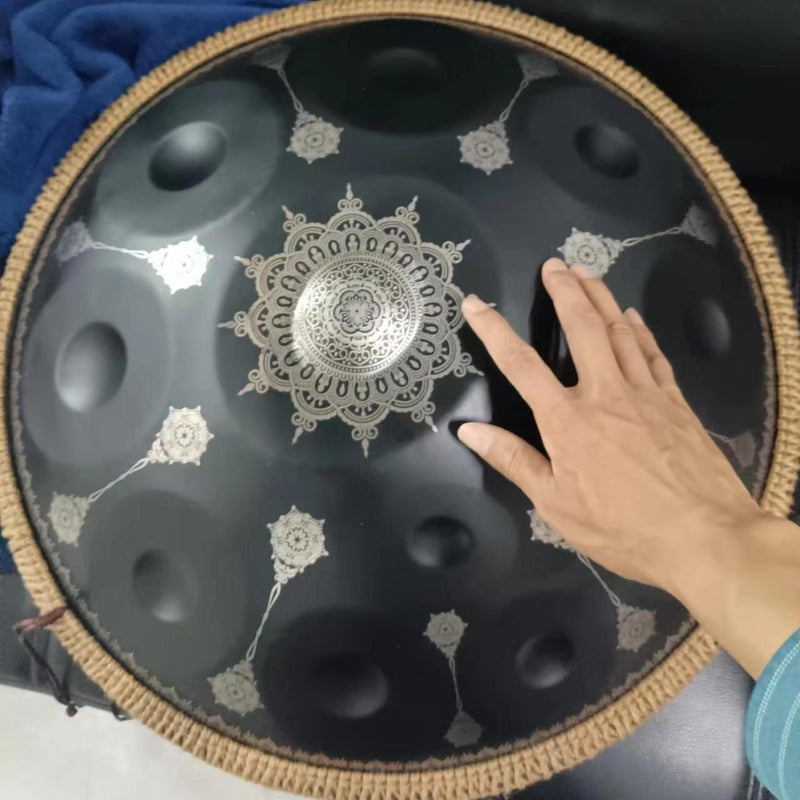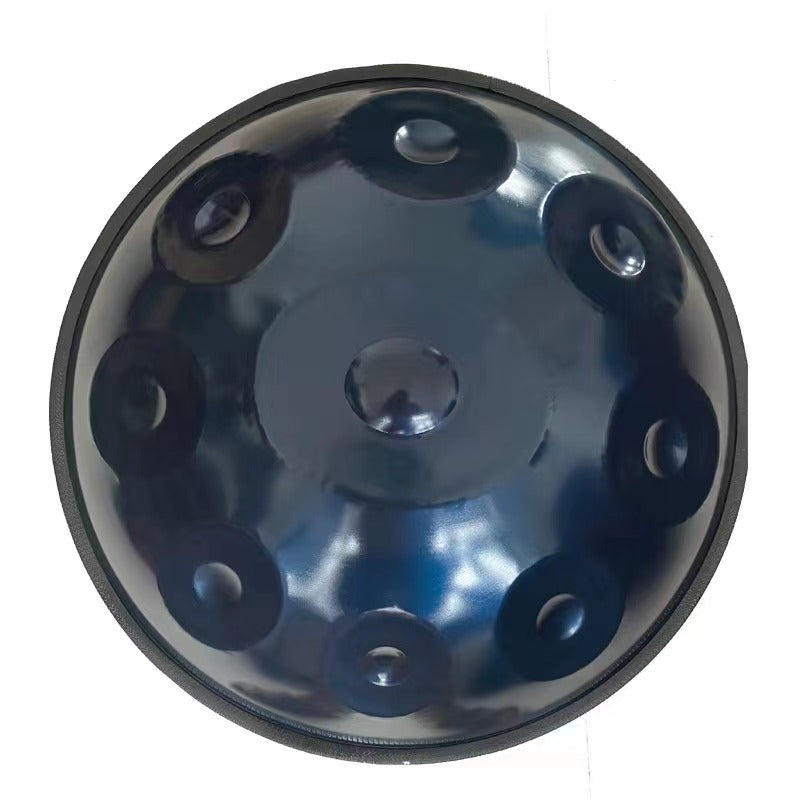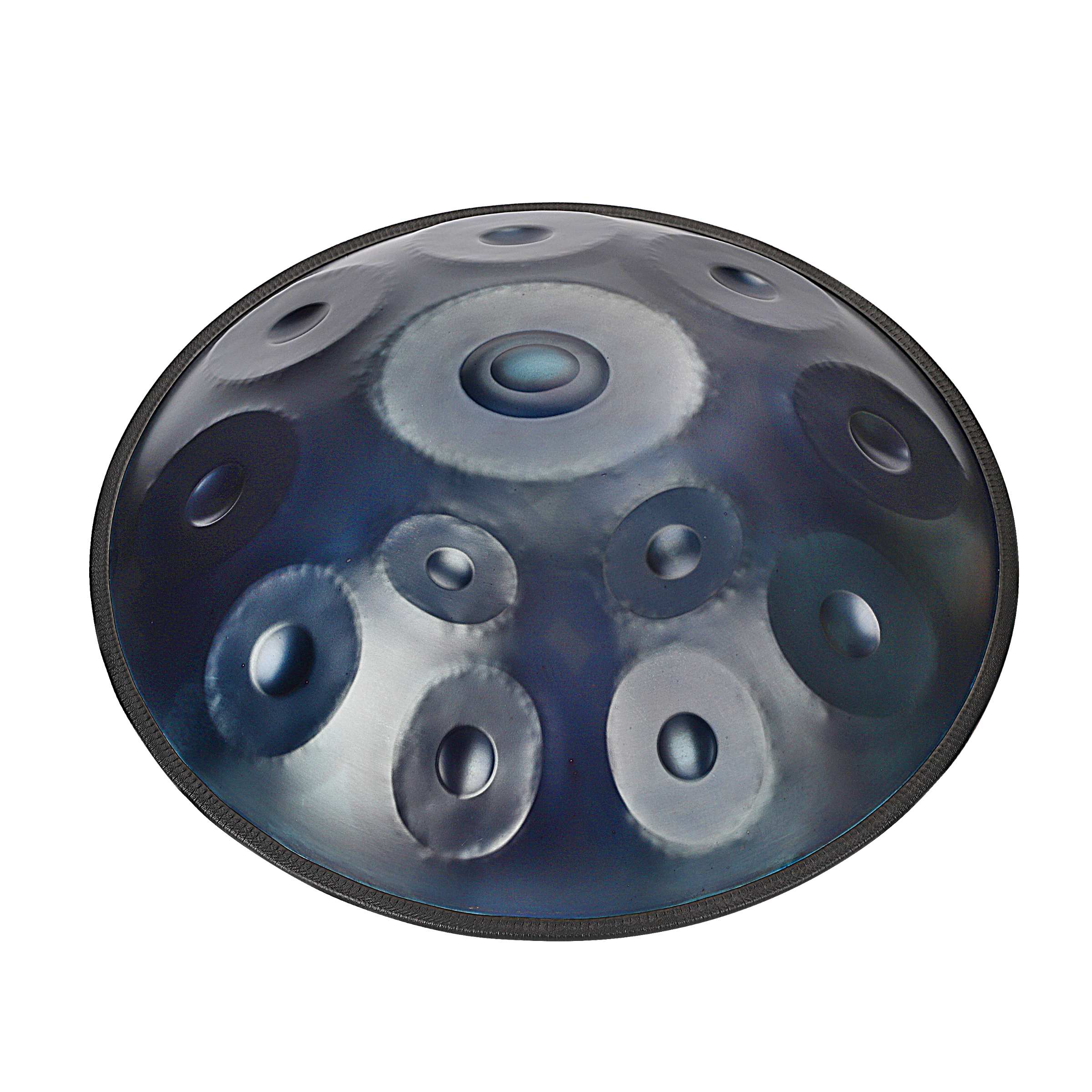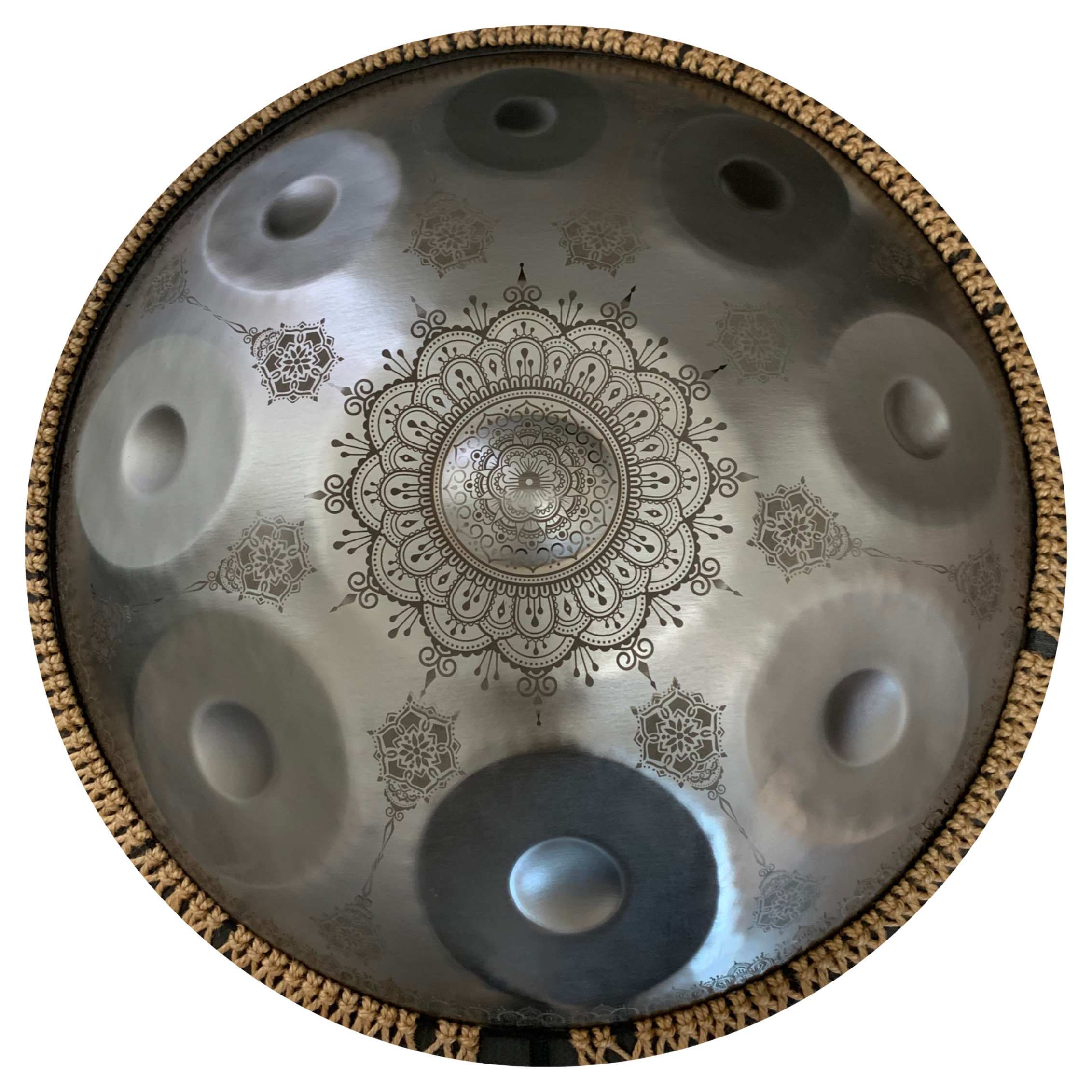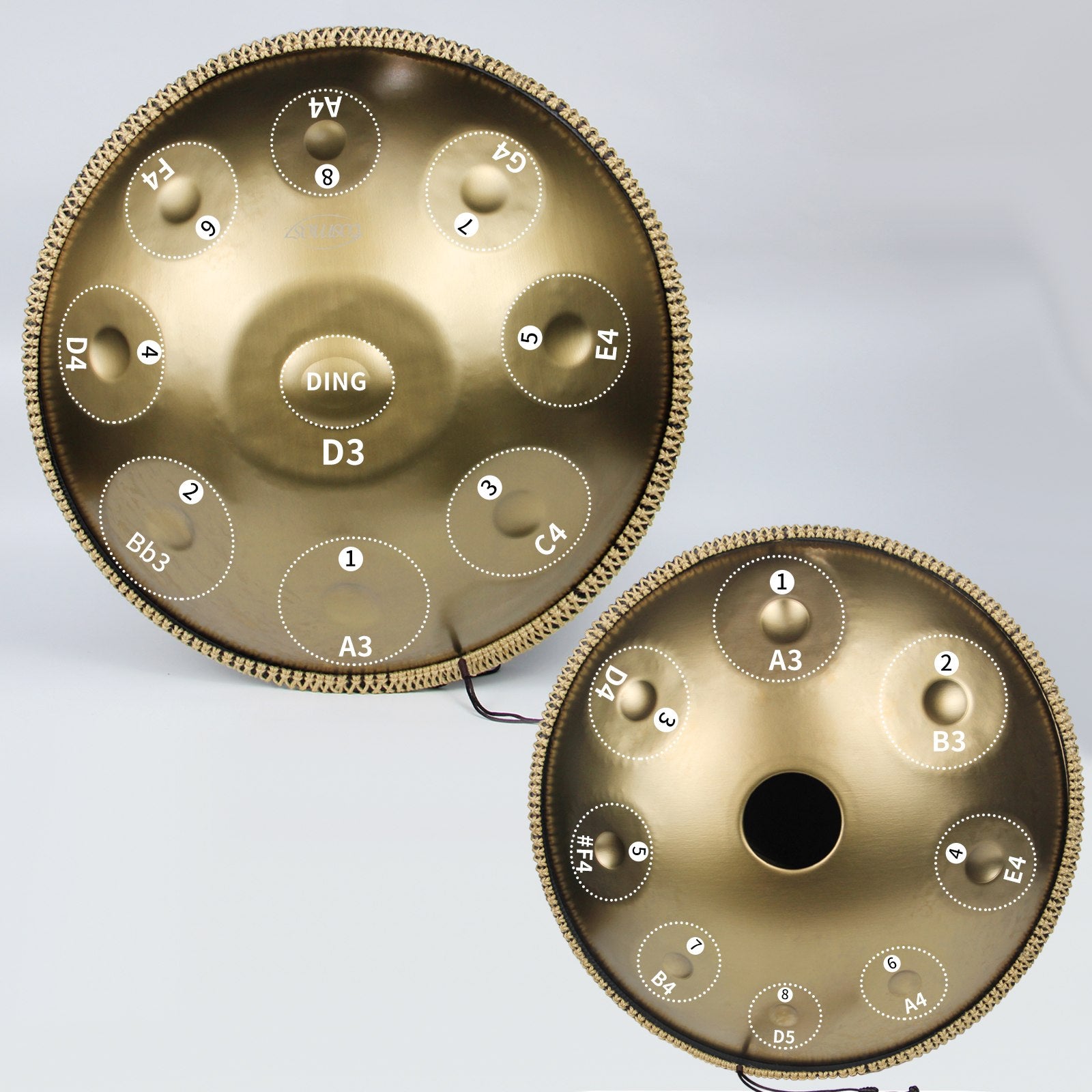Wenn Sie neu in der faszinierenden Welt der Handpans sind, erwartet Sie eine musikalische Reise voller fesselnder Melodien und mitreißender Rhythmen. Die Wahl der richtigen Handpan als Anfänger kann eine aufregende, aber auch herausfordernde Aufgabe sein, angesichts der Vielzahl an verfügbaren Optionen. Um Ihnen zu helfen, eine informierte Entscheidung zu treffen, lassen Sie uns einige wichtige Tipps erkunden, wie Sie die perfekte Handpan für Ihre musikalische Reise auswählen.
1. Verstehen Sie die Grundlagen:
Bevor wir in den Auswahlprozess eintauchen, ist es wichtig, die grundlegenden Aspekte von Handpans zu verstehen. Eine Handpan ist ein Schlaginstrument mit einer gewölbten Ober- und Unterseite, das typischerweise aus Stahl gefertigt ist. Sie erzeugt ätherische Töne, indem man die gestimmten Noten mit den Fingerspitzen anschlägt. Machen Sie sich mit Begriffen wie Skala, Notenlayout und Klangqualität vertraut, um besser zu verstehen, worauf man bei einer Handpan achten sollte.
2. Bestimmen Sie Ihr Budget:
Handpans gibt es in einer breiten Preisspanne, daher ist es wichtig, ein Budget festzulegen, das mit Ihren finanziellen Ressourcen übereinstimmt. Hochwertige Handpans können eine erhebliche Investition sein, aber denken Sie daran, dass ein höherer Preis nicht immer das beste Instrument für Ihre Bedürfnisse garantiert. Überlegen Sie Ihr Budget sorgfältig und erkunden Sie Optionen, die ein gutes Preis-Leistungs-Verhältnis bieten, ohne Kompromisse bei der Klangqualität und Handwerkskunst einzugehen.
3. Verschiedene Skalen recherchieren:
Handpans sind in verschiedenen Skalen erhältlich, die jeweils eine einzigartige Reihe von Tönen und musikalischen Möglichkeiten erzeugen. Zu den gängigen Skalen gehören pentatonische, diatonische und chromatische Skalen. Recherchieren Sie und hören Sie Aufnahmen verschiedener Skalen, um die zu identifizieren, die mit Ihren musikalischen Vorlieben und Ihrem Spielstil harmonieren. Bedenken Sie, dass einige Skalen anfängerfreundlicher sein können, da sie einfachere Übergänge zwischen den Tönen und einfachere Melodien bieten.
4. Suchen Sie Rat bei Experten:
Zögern Sie nicht, sich von erfahrenen Handpan-Spielern oder seriösen Verkäufern beraten zu lassen, wenn Sie Ihr Instrument auswählen. Sie können wertvolle Einblicke bieten, zuverlässige Marken empfehlen und Ihnen helfen, die Komplexität der Handpan-Auswahl zu bewältigen. Ziehen Sie in Betracht, an Workshops teilzunehmen, Online-Communities beizutreten oder Experten für persönliche Ratschläge und Empfehlungen zu kontaktieren.
5. Testen Sie, bevor Sie kaufen:
Wann immer möglich, probieren Sie verschiedene Handpans aus, bevor Sie einen Kauf tätigen. Das Testen ermöglicht es Ihnen, die Klangqualität, Reaktionsfähigkeit und das allgemeine Gefühl des Instruments aus erster Hand zu erleben. Achten Sie während Ihrer Testsitzungen auf Faktoren wie Sustain, Resonanz und Spielbarkeit. Wenn der Besuch eines physischen Geschäfts nicht möglich ist, erkunden Sie Optionen für virtuelle Demos oder Aufnahmen, die die Fähigkeiten der Handpan präsentieren.
6. Berücksichtigen Sie die Verarbeitungsqualität und das Material:
Die Verarbeitungsqualität und das Material eines Handpans haben einen erheblichen Einfluss auf seine Haltbarkeit, Klangprojektion und ästhetische Anziehungskraft. Achten Sie auf Handpans, die aus hochwertigem Stahl mit präziser Handwerkskunst und Liebe zum Detail gefertigt sind. Berücksichtigen Sie Faktoren wie Nitridierung (Wärmebehandlung) zur Verbesserung der Haltbarkeit, rostbeständige Beschichtungen und ergonomische Designelemente, die die Spielbarkeit und den Komfort erhöhen.
7. Vertraue deinen Instinkten:
Letztendlich sollten Sie Ihren Instinkten und Ihrer Intuition vertrauen, wenn Sie ein Handpan kaufen. Wenn ein bestimmtes Instrument auf emotionaler und musikalischer Ebene mit Ihnen in Resonanz steht, ist es wahrscheinlich die richtige Wahl für Ihre Reise. Nehmen Sie sich Zeit, erkunden Sie verschiedene Optionen und überstürzen Sie keine Entscheidung, bis Sie sich sicher und zufrieden mit Ihrer Auswahl fühlen.
Abschluss:
Die Wahl eines Handpans für Anfänger ist eine aufregende und lohnende Erfahrung. Indem Sie die Grundlagen verstehen, Skalen recherchieren, Rat suchen, Instrumente testen, die Verarbeitungsqualität berücksichtigen und auf Ihr Bauchgefühl vertrauen, können Sie die perfekte Handpan finden, die Kreativität und musikalische Entfaltung inspiriert. Umarmen Sie die Reise, genießen Sie den Prozess und lassen Sie sich von den bezaubernden Klängen der Handpan auf Ihrem musikalischen Weg leiten.

